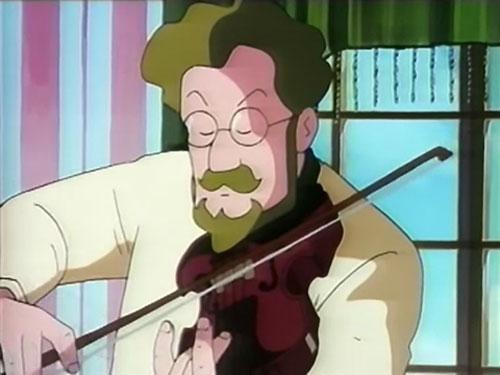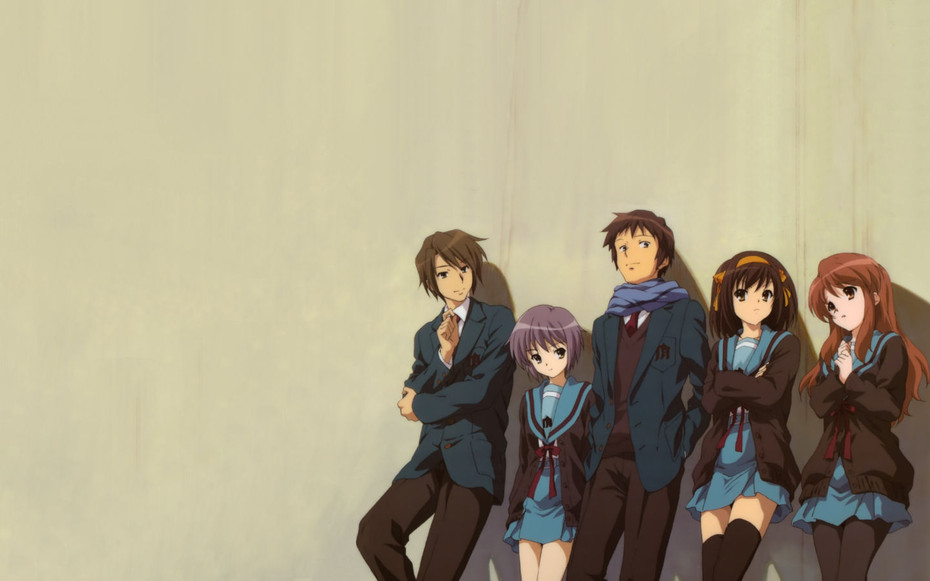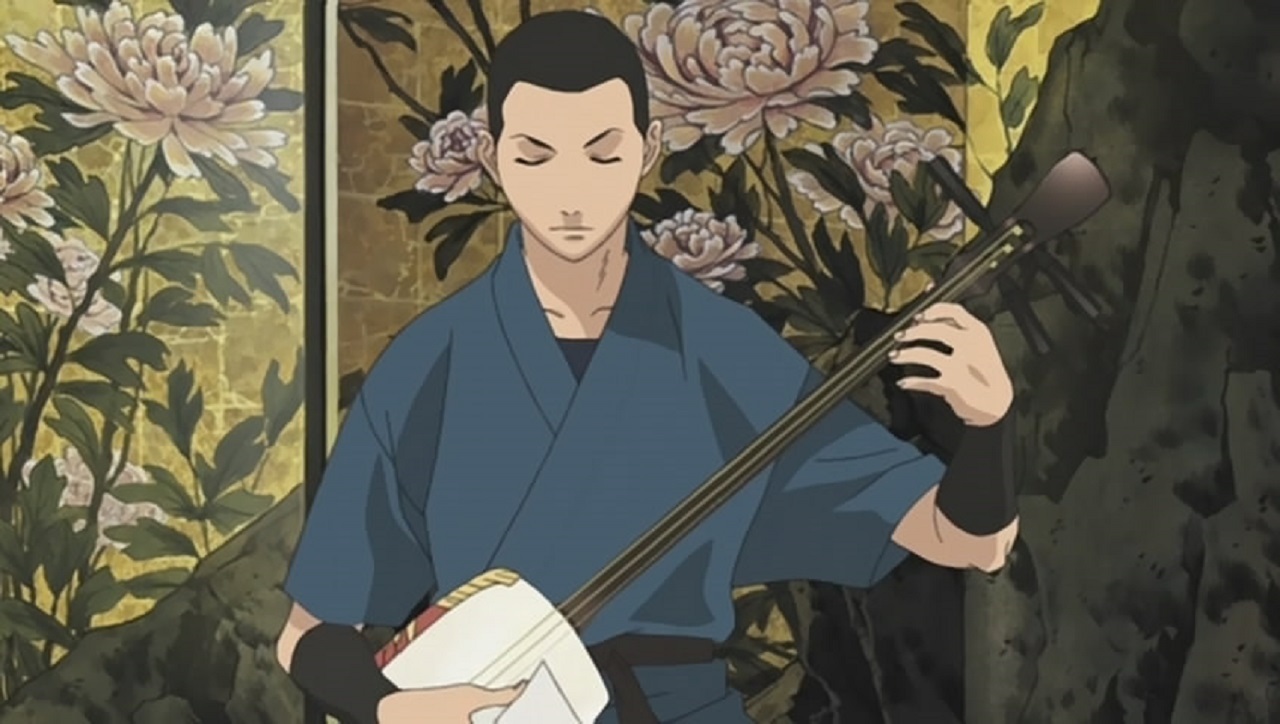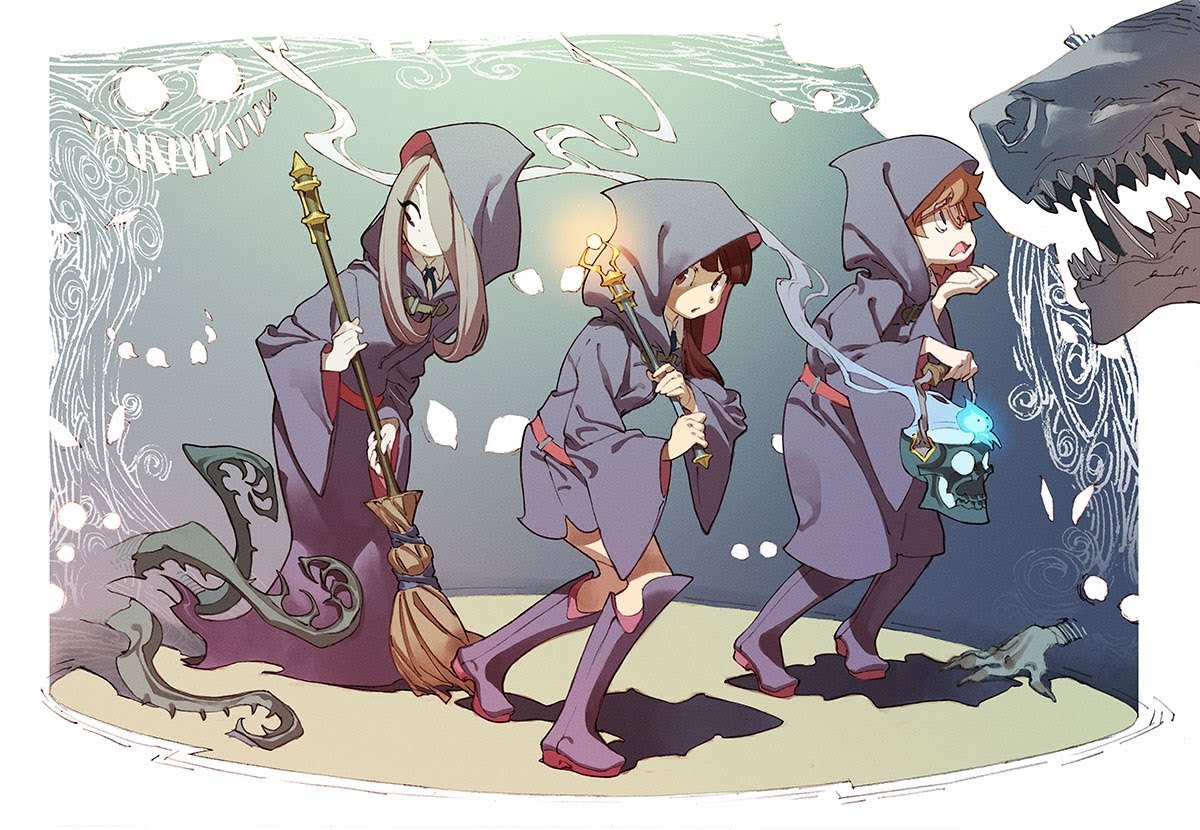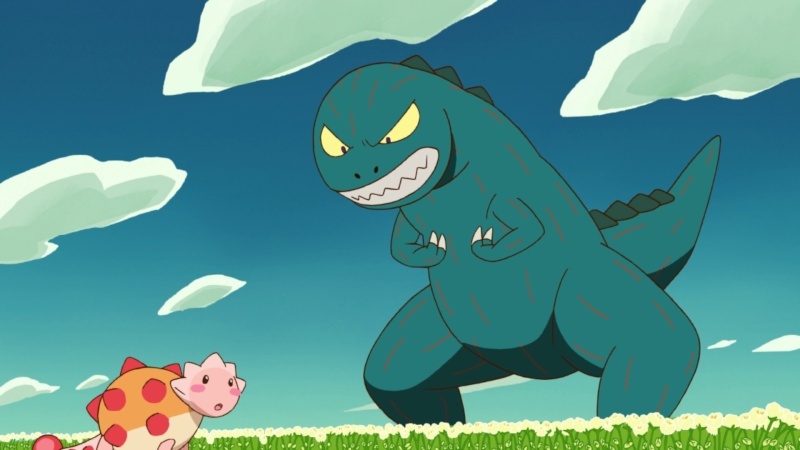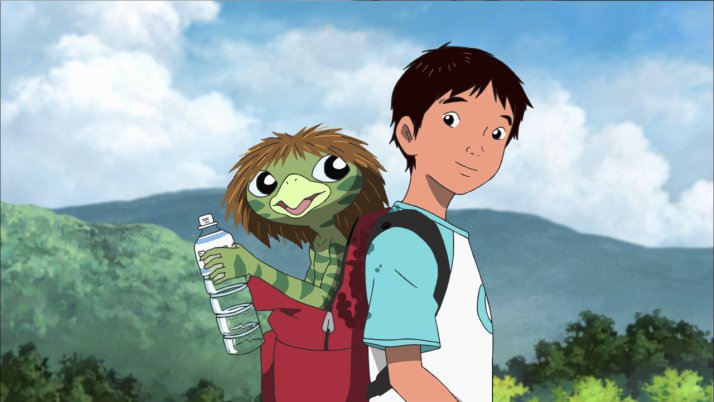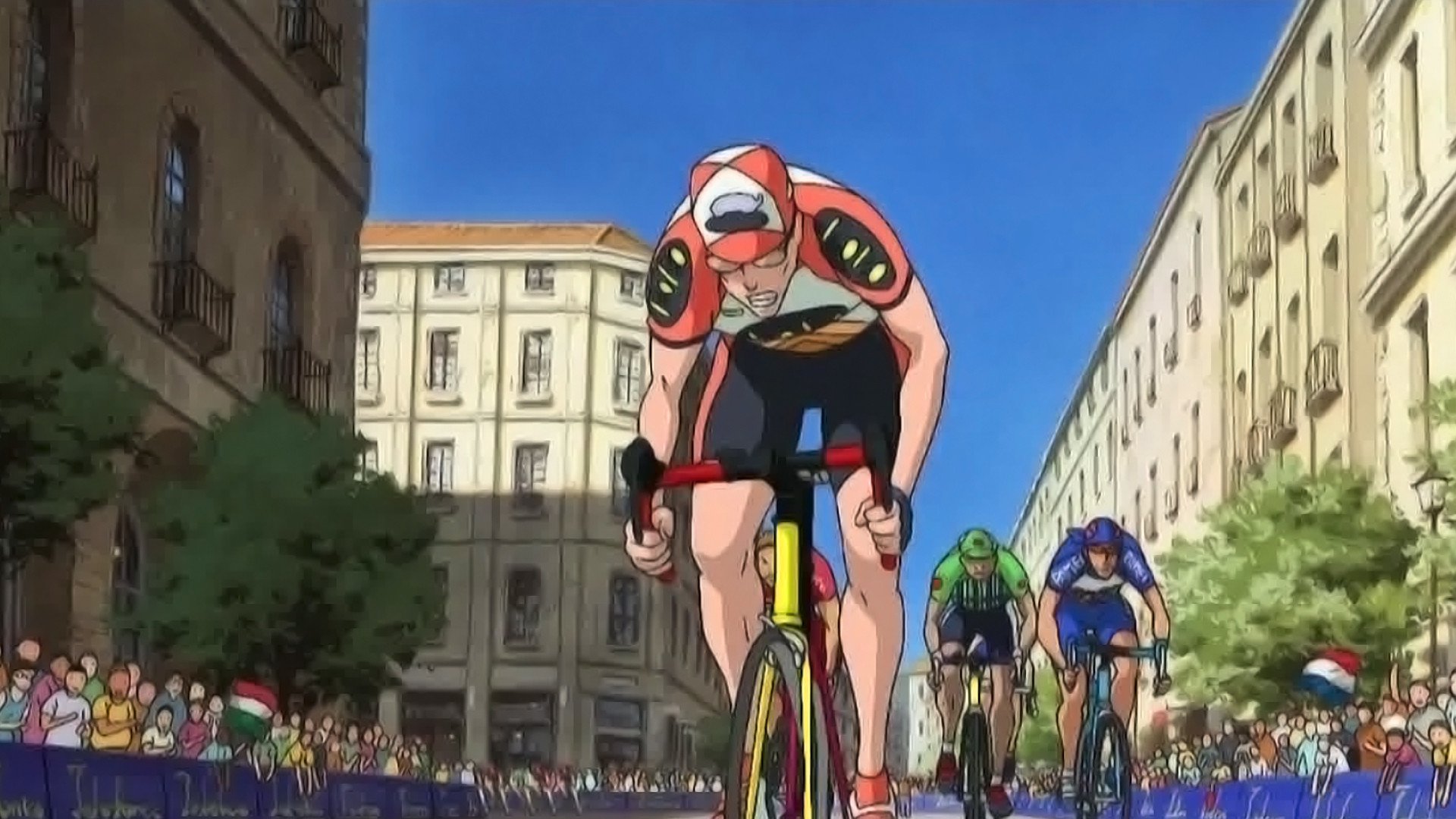14. Hoshizora no Violin
Ghibli is known for great musical accompaniment to its films and has even gone as far as to pay tribute to musicians and music makers in its films. In “Gauche the Cellist,” a group of animals help Gauche master the cello. Although it plays as a minor plot point, “Whisper of the Heart’s” Seiji dreams of becoming a master violin maker.
“Hoshizora no Violin” picks up where “Whisper of the Heart’ left off. Its main character, after going to a concert one night, and witnessing the violin for the first time, Ozawa Kikuji falls in love with the instrument. Unable to afford his own violin yet determined to try it out, Kikuji sets out to make his own violin and dreams of mastering it. Along the way inexperience, lack of proper tools and even war stand as obstacles on his path to success.
Kikuji’s unfaltering determination in the face of these unsurmountable circumstances gives “Hoshizora no Violin” the warmth of a Ghibli film that anyone can enjoy.
13. The Disappearance of Haruhi Suzumiya
The quintessential moe character, Haruhi Suzumiya’s giant eyes, short skirt and snarky attitude may seem to clash with the very essence of Studio Ghlibi’s style and films. Yet underneath all of “The Disappearance of Haruhi Suzumiya’s” “cute girl” trappings lies a beautiful fairytale worthy of the hallowed Ghibli Studio.
In what plays like an animated spin on “It’s a Wonderful Life,” Kyon, the series’s teenage protagonist wakes to find what his world would be like without the presence of the troublesome Haruhi Suzumiya, a classmate who unkowingly possesses world-altering power of a god and is the root of every conflict in Kyon’s life.
Although Kyon welcomes the change, life feels stale without the catalyst he has grown accustomed to. More intrigued than worried, Kyon sets off to discover what has become of Haruhi, a quest that forces him to make the toughest decision of his life.
Based on the fourth light novel in Nagaru Tanigawa’s famous series, “The Disappearance of Haruhi Suzumiya” has top-notch story, animation and art. Although it’s big eyed, narrow faced “moe” style represents what many consider the antithesis of Studio Ghibli’s works, the art, coloring and animation caught the attention of animation fans with its 2010 release.
Although “The Disappearance of Haruhi Suzumiya” relies on an established universe and characters, the endearing story beautiful animation will please newcomers and win new members to the Haruhi fanbase.
12. Nitaboh
Ghibli film’s notable soundtracks make the studio’s films more engrossing and memorable. From the orchestrated background music to the occasional pop hits like Ken Sakamoto’s “Sukiyaki” and John Denver’s “Country Roads,” choice tracks create an appropriate moods that accentuate the studio’s visual style and nostalgic aura.
Music occupies the very heart of “Nitaboh,” a film that tells of a legendary shamisen player who mastered the instrument by walking his own path.
Blinded in his youth, Nitarou’s struggles and constant practice leads to the birth of his own “tsugaru” style, an aggressive and fast playing technique that contrasts the slow, methodical way of playing that was popular at the time. Tsugaru’s clash with established shamisen traditions earns Nitarou many fans, but also makes enemies within the long-time shamisen establishment.
Although “Nitaboh’s” story and music will entertain all audiences, Ghibli fans will enjoy the film’s historical and cultural elements.
11. Little Witch Academia: The Enchanted Parade
As the witch-in-training Kiki would attest, Ghibli has never shied away from magic or witchcraft. “Little Witch Academia: the Enchanted Parade” takes it up a notch by focusing on an entire school of witches. When students Akko, Lotte and Sucy put together a parade honoring witches for a local town festival, they mistakenly awaken giant beats and the festival turns into an allout emergency situation. Can the girls utilize their unique talents to put things right?
What plays as a mishmash of “Kiki’s Delivery Service” and “Harry Potter,” “Little Witch Academia” offers the innocence and comradery of Japanese school series with the action and climax of a Hollywood movie. Although “Little Witch Academia” may not have the deep themes of a Ghibli film, its character and universe building surpasses many anime television series of three to six times the length and it’s wild conclusion has to be experienced!
10. You Are Umasou
Ghilbli Studios has covered a range of subject matter during its illustrious history and fans have seen everything from giant bugs to tiny people. Yet, of all the imaginative worlds Ghibli has explored, the prehistoric has remained untouched. Let “You Are Umasou” fill that void as its narrative focuses on the prehistoric giants.
Heart, an orphaned Tyrannosaurus raised by an herbivorous mother grows up on a diet of veggies and berries. But when a scuffle with a fellow Tyrannosaurus gives Heart his first taste of meat, natural instinct takes over and he finds the urge for meat impossible to resist. But Heart’s relationship with his adopted family sets him at odds with the other herbivores and carnivores and stirs an inner conflict Heart long tried to avoid. Will he decide to side with the herbivores or give in to his carnivorous nature?
Based on a series of picture books, the movie forgoes author Tatsuya Miyanishi’s unique, super-colorful art style for a more conventional fare. But that isn’t to say “You Are Umasou” lacks in its visuals – the film touts slick animation fit for an adult feature. Although the characters are cute, “You Are Umasou” might surprise viewers with its dangerous world and heavy subject matter. At its core “You Are Umasou” is a coming of age tale about facing expectations and finding one’s way in life.
9. Summer Days With Coo
In “My Neighbor Totoro,” sisters Mei and Satsuki discover Totoro, a mysterious woodland spirit. Thanks to their reclusive countryside home and adults’ inability to see their new friend, their discovery brings comfort instead of conflict and Totoro ends up helping the girls.
In “Summer Days With Coo,” the young boy Koichi brings a dried up kappa, or Japanese water sprite, back to life. Unlike Totoro, however, everyone can see the kappa and when Coo stumbles into the wilds of the city Koichi’s secret discovery becomes impossible to hide. As the city is thrown into a frenzy over its new monster celebrity, Koichi is forced to make some tough decisions regarding Coo’s future.
“Summer Days With Coo” throws old fashioned Japanese folklore into a modern day setting. With a theme of environmental preservation, Coo offers audiences food for thought as well as a great animated tale.
8. Nasu: Summer in Andalusia
Although sports series fill entire shelves in Japan’s anime and manga shops, Ghibli has yet to touch the subject. For those that wonder what a Ghlibi sports film would look like, “Nasu: Summer in Andalusia” provides the answer. With a production team that includes former Ghlibi staff member Kitarō Kōsaka, animation supervisor of both Princess mononoke and Spirited Away, Nasu’s art, particularly its faces, resembles Ghibli’s warm, expressive style.
Cyclist Pepe Benengeli has no luck. As a backup on a pro-cycling team, he is expected to serve as the support for the team’s top dogs. Although a leg of his current race runs through his hometown, it coincides with the day his brother and ex-girlfriend’s wedding ceremony. Just when things can’t seem to gets worse for the poor cyclist, they do. When Pepe overhears his sponsors discuss his firing, Pepe decides to go for broke and win the race.
Don’t watch “Nasu: Summer in Andalusia” on its Ghibli connections alone! The film also offers an accurate look into the world of pro-cycling and the culture of Andalusia, an independent community in the country of Spain. Best of all, if you love this film, you can check out the sequel, “Nasu: Suitcase no Wataridori”
